- Administrator
- Albums and Singles
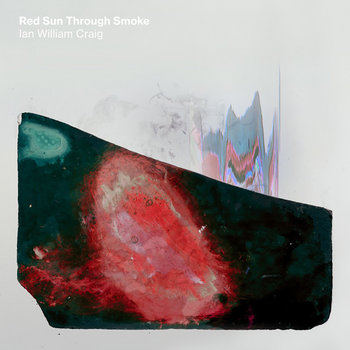
Eighteen months on from his last solo release, Vancouver-based singer/composer Ian William Craig returns with a brilliant and powerfully emotive new album. His first for a long while to be centered around the piano - and also one of his most pared back - the record was made through an intense period of personal loss and environmental catastrophe.
Red Sun Through Smoke was recorded over two cataclysmic weeks in August 2018 in Kelowna, whilst the city was encircled by the forest fires which, under a warming climate, now regularly rage through British Columbia in summertime. With smoke engulfing the landscape, Ian describes how "the houses across the road couldn’t be seen save for a brief white on white outline. The sun was dull red on grey. The air was becoming steadily dangerous. There was nowhere to go that was not this way; all the space filled up with worry." Having committed to recording that August, Ian sought a supposedly calmer retreat in which to work. Carrying his gear across the province to set up a temporary studio space, the album was recorded from start to finish in the living room of a small house owned by his grandfather who was now residing in a care facility across the street, having been afflicted with dementia for the past decade. The morning after Ian arrived, his parents unexpectedly phoned to say that they would be flying in too, as Grampa had been moved into palliative care, his lungs filled with fluid as a result of the smoke. Despite this shocking turn of events, Ian's parents convinced him to keep recording, with the process ultimately becoming a document of the difficult place in which they found themselves.
One benefit of recording at his grandad's lay in gaining access to his piano, which became the record's anchoring point. Beyond this, the only other instrumentation consisted of Ian’s voice, a shortwave radio set, several modified tape decks and a bunch of tape loops. Ian notes how events helped force the shape of the record and a tendency toward a less layered, more spartan expression. "Everything felt raw, I didn't want there to be anywhere to hide in this record. My parents and I were cramped together in a small house while my grandfather slowly died across the street in a world filled with smoke, after all. So, in this record, more than most, there exist a great many things straight to tape without any effects because there really was no space."
Forged in trauma and an intense, bewildering slew of mixed emotions, Ian William Craig has created an album of incredible beauty, sadness and depth. Red Sun Through Smoke is a profoundly moving album, a standout record in a prolific body of work that shows no sign of faltering.
More information can be found here.
Read More
- Administrator
- Albums and Singles

Second volume in a trilogy exploring the teenage tape experimentation of Warren Defever aka His Name Is Alive. Echo-drenched guitar instrumentals, field recordings and gorgeous ambient tones pulsate through the analogue murk, also taking in dalliances with greyscale industrial drone, musique concrète and even a burst of 4-track noise pop reminiscent of the early work of The Jesus And Mary Chain.
More information can be found here.
Read More
- Administrator
- Albums and Singles
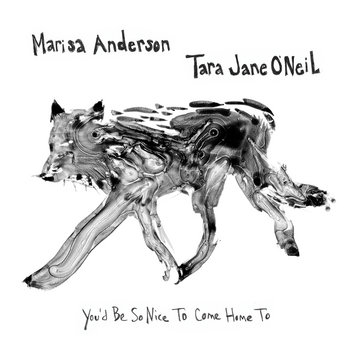
TJ and I recorded these songs in her backyard studio in February of 2018. We've been friends and occasional collaborators for years, crossing paths and sharing stages and the timing was right to capture a certain moment. I was on my way back from Mexico, not quite ready to return to the grey skies of the Pacific Northwest, and to me these songs capture a bit of lazy California winter, crossing paths with a trusted friend, playing guitars and singing old songs. – Marisa Anderson
Cole Porter and Gene Clark are among my favorite songsmiths and rendering their music during that warm midwinter of wildfires and aftermaths was perfect. Marisa and i have had an adventurous collaborative friendship, playing sonics and playing standards. The songs on this 7 inch are a cool continuation of our shared journey. – tjo
More information can be found here.
Read More
- Administrator
- Albums and Singles
 I always love scavenging the internet for interesting end-of-year lists every December, as I invariably find a handful of great albums and films that I slept on like a fool. In fact, a lot of those belated finds wind up being among my favorites, as the albums I miss tend to be inspired and refreshing departures from the labels and scenes that I usually follow. This unusual debut album from LA's Ana Roxanne was one such find from last year, as it surfaced back in March and I probably dismissed it instantly as a vinyl reissue of some private press New Age obscurity (if I noticed it at all). Given both the look of the album and Roxanne's aesthetic, that is not a terribly outlandish conclusion to make, but a closer listen reveals that ~~~ is considerably more compelling and distinctive than it first appears. For example, Roxanne checks two boxes that have historically been strong indicators of a radical compositional approach: she both studied Hindustani singing in India and attended the fabled Mills College. As a result, Roxanne has an unusually sophisticated understanding of harmony and avant-garde compositional techniques for this stylistic milieu. Such a path would normally steer an artist towards an Eastern drone/La Monte Young vein, yet Roxanne deftly sidesteps anything resembling a predictable path, as ~~~ can best be described as what might result if a mermaid studied with Eliane Radigue: drone-based minimalism that evokes a soft-focus idyll of lapping waves and floating, angelic voices.
I always love scavenging the internet for interesting end-of-year lists every December, as I invariably find a handful of great albums and films that I slept on like a fool. In fact, a lot of those belated finds wind up being among my favorites, as the albums I miss tend to be inspired and refreshing departures from the labels and scenes that I usually follow. This unusual debut album from LA's Ana Roxanne was one such find from last year, as it surfaced back in March and I probably dismissed it instantly as a vinyl reissue of some private press New Age obscurity (if I noticed it at all). Given both the look of the album and Roxanne's aesthetic, that is not a terribly outlandish conclusion to make, but a closer listen reveals that ~~~ is considerably more compelling and distinctive than it first appears. For example, Roxanne checks two boxes that have historically been strong indicators of a radical compositional approach: she both studied Hindustani singing in India and attended the fabled Mills College. As a result, Roxanne has an unusually sophisticated understanding of harmony and avant-garde compositional techniques for this stylistic milieu. Such a path would normally steer an artist towards an Eastern drone/La Monte Young vein, yet Roxanne deftly sidesteps anything resembling a predictable path, as ~~~ can best be described as what might result if a mermaid studied with Eliane Radigue: drone-based minimalism that evokes a soft-focus idyll of lapping waves and floating, angelic voices.
For all intents and purposes, ~~~ admittedly does sound a hell of a lot like it could have been the work of some gifted, synth-wielding yoga hermit from the '80s. The fact that it is not, however, is noteworthy: there is nothing about this album or Roxanne's background to suggest that she had any interest in undertaking any sort of homage to that era. More likely, she just independently wound up in a similar place simply by virtue of her similarly meditative and autodidactic bent.In fact, it seems like Roxanne's biggest single influence was probably her own life (with a particular emphasis on her early love of R&B and all the time that she spent in church choirs growing up). That, in essence, is what I most love about this album, as it is all-too-rare these days to encounter art in such a pure, unselfconscious form. At its best, ~~~ sounds like the work of a composer who wants nothing more than to transform her lived experiences into something intimate, poetic, and beautiful. Moreover, Roxanne achieves that in an inventive way that feels both timeless and effortless. She arguably only threatens that perfect, idyllic spell on the rare occasions when the synths blossom into something more prominent and melodic than mere drones. To Roxanne's credit, however, those sparing psych flourishes are almost always effective enough to justify such an out-of-character nod to recognizably "cool" influences.
The opening "Immortality" captures Roxanne in her purest, most undiluted form, as it is essentially just her voice (alternately singing and speaking) over a warm, gently quivering, and blurry bed of drones. It is quite a gorgeous piece, as Roxanne's harmonizing vocals have an angelic quality that calls to mind Julee Cruise's work with Angelo Badalamenti and David Lynch (minus all the creepy and seductive overtones and undercurrents). The next two pieces only deepen that sense of dissolving into a quietly rapturous dreamscape, as Roxanne subtly expands her palette in an increasingly layered, immersive, and reality-bending direction."Slowness" is the most "composed" piece on the album, as it lies somewhere between a meditation tape, an exercise in tape-loop experimentation, and a bittersweetly lovely organ piece. The lazily intertwining melodies and warm harmonies of the latter are the best part, but the way that all of the disparate elements come together is quite effective as well (I especially like the ghostly, steadily pulsing synth loop that functions as the piece's backbone). The following "It's a Rainy Day on the Cosmic Shore" is even better still, though it admittedly takes a little while before it fully coheres. Once it does, however, it is an absolutely sublime piece of music, as crashing waves, swelling drones, and fluttering synth melodies combine to evoke a heavenly, hallucinatory beach or magical undersea grotto. Elsewhere, "Nocturne" then returns to the minimalism and swooningly lovely Siren-esque vocals of "Immortality," while "I'm Every Sparkly Woman" approximates a curious collision of deconstructed R&B and radiant, rippling New Age bliss. The album then winds to a close with a remarkably good sound collage that blends together a church chorus, a singing toddler, lapping waves, strains of pop music from a radio, wind chimes, and a group of cheerfully bantering women.
While that final piece ("In a Small Valley") is not my favorite piece on the album, it is a beautiful illustration of one key element makes Roxanne's aesthetic so special and unique: her incredibly effective and intuitively organic use of field recordings.Obviously, using field recordings for texture or surrealist mindfuckery is quite common in contemporary experimental music circles these days, yet Roxanne seems to use them only to vividly evoke specific scenes and all of those scenes seem personally meaningful. As such,~~~ has an abstractly diaristic feel that suggests a languorous, impressionistic flow of poignant memories and allusions to significant moments. That unerring instinct for simple, uncluttered artistic honesty is evident in other ways too, as Roxanne's elegantly blurred and beautiful voice is the true heart of her art, so she is wise to limit her musical accompaniment to little more than subdued drones and looping melody fragments (even if the more fleshed out "Slowness" is a highlight). It is a tricky balance to get just right, which probably explains why ~~~ is such an unusually brief album (it clocks in at under half an hour): Roxanne could have easily padded out the release with some additional drone or synth-driven pieces, but that would have diluted the power and simple beauty of her statement. This is not a unique and beguiling album because Roxanne has an especially bold experimental vision or a knack for killer synth patches—it is a unique and beguiling album because such things are relegated to a mere supporting role as she strives for something deeper, more intimate, and more elusive. When those experimental or hook-sculpting tendencies surface, they are certainly welcome, but the true brilliance of ~~~ is that it captures self-expression in its most distilled and sincere form. This is a hell of a debut.
Samples can be found here.
Read More
- Administrator
- Albums and Singles
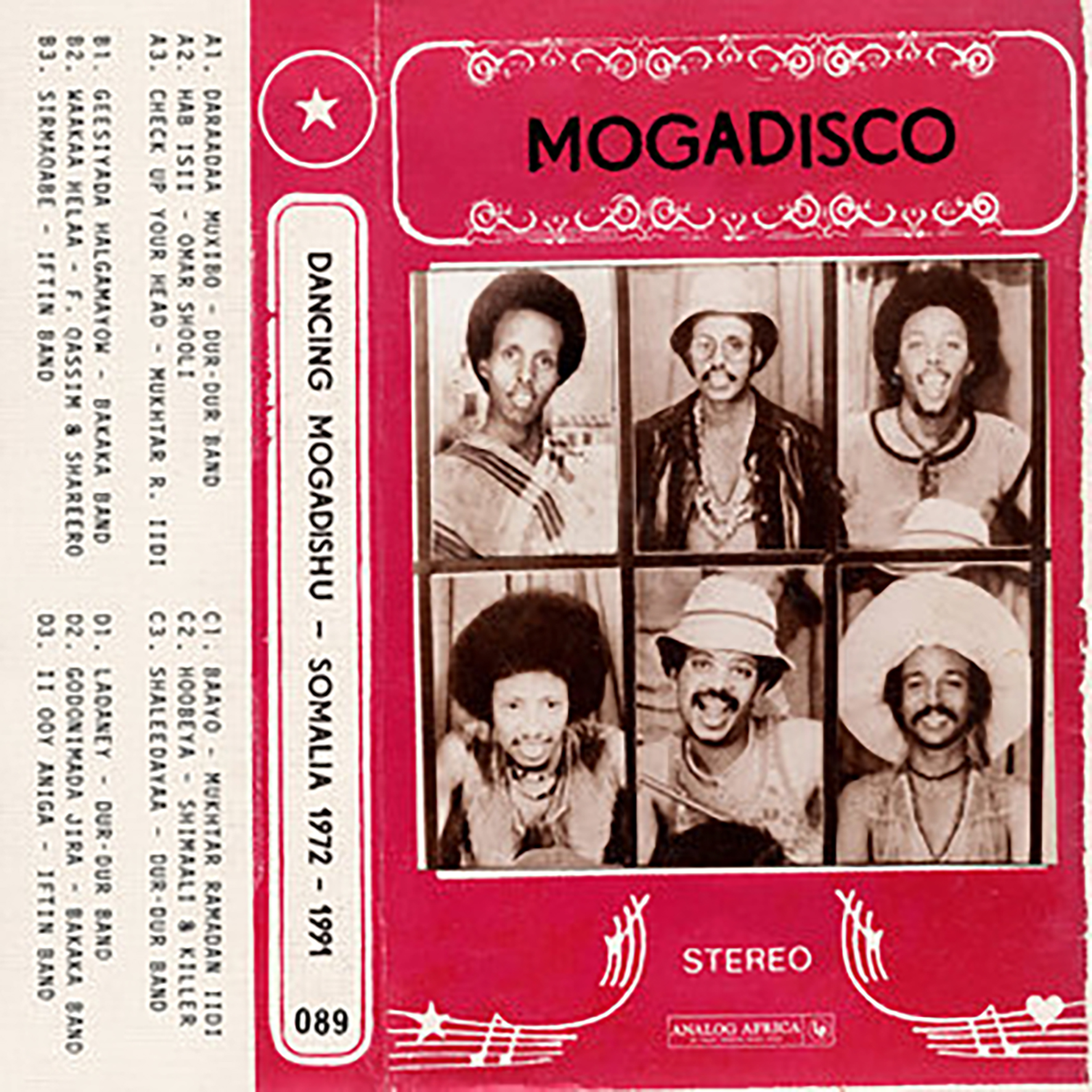
It is difficult for me to imagine Analog Africa ever releasing a predictable or uninspired compilation, as Samy Ben Redjeb seems fundamentally incapable of ever focusing his attention on a scene or place that has already been anthologized by his crate-digging peers. Mogadisco is predictable in one regard though, as Redjeb makes his return to the African continent after Jambú e Os Míticos Sons Da Amazônia's surprise detour into Brazil. Characteristically, however, Redjeb swims against the tide, as he decided to go digging in one of the world's most dangerous and tourist-unfriendly places after seeing a video about the Radio Mogadishu archives. A less driven person would have been immediately put off by the need to have an armed escort every single time he went outside, but that is the difference between Redjeb and everyone else: if he heard that there was a killer record hidden at the bottom of the Marianas Trench, he would either find a way to get to it or die trying. As usual, Redjeb's efforts yielded some genuinely wonderful finds, though this latest batch of long-forgotten and obscure gems is not quite as rhythmically unique as those on other Analog Africa collections. Fortunately, most of these artists managed to achieve a distinctive character in other ways. Analog Africa's hot streak remains unbroken.
This compilation, Analog Africa's first major overview of Somalian music, is primarily the result of a trip Redjeb made to Mogadishu back in November of 2016.Naturally, the aforementioned archives were the focal point of Redjeb's brief residency in the city.That was probably for the best, as the environment did not sound at all conducive for digging around flea markets or seeking out like-minded record dealers.The fact that the hunt was mostly limited to just one building did not necessarily make it any easier than usual though, as being confronted with a collection of "roughly 20,000" undigitized tapes in a foreign country would be daunting for anyone.Also, it is safe to say that Redjeb (as a perpetual outsider) is almost never looking for the sorts of albums that people would expect him to be hunting for, as he tends to be exclusively drawn to long-forgotten eras and stylistic outliers.
Fortunately, Redjeb did have a few reference points in mind beforehand, as he was a big fan of Iftin Band and Dur-Dur Band (he has previously anthologized the latter with a two-volume set).That certainly helped the archive staff to focus their search a bit.And, of course, there were a few welcome surprises both within the archive and beyond its walls.Regarding the latter, Redjeb managed to locate a cassette warehouse, so he was able to put his hours to good use while awaiting updates from the archive staff.In fact, his days of drinking coffee and digitizing boxes of warehouse tapes in his room actually wound up yielding a number of this album's better finds.Redjeb's other bit of serendipity was the discovery of a box in the archive described as both "music nobody had managed to identify" and "mainly instrumental and strange music."Two of the best pieces on the album actually emerged from that pile and both certainly fit quite comfortably in that latter category.Both are by Iftin Band.
My favorite of the two is "Ii Ooy Aniga (Cry For Me)," a bittersweetly lovely instrumental carried along by a propulsive, high-hat-heavy disco groove.Elsewhere, Iftin Band's other piece ("Sirmaqabe (No Secrets)") is the most surprising one on the album, as its surf-inspired guitars and organ melodies make it sound like an escapee from Sublime Frequencies' Shadow Music of Thailand compilation.I guess some albums by The Shadows must have made it to Somalia too, though Redjeb's interview with Iftin Band's percussionist Salah Hariri mentions that they were in demand primarily because they could play funky music like Michael Jackson and James Brown better than other bands.That may very well have been true at the time, but Mukhtar Ramadan Iidi easily steals the show as the funkiest artist on Mogadisco, as "Check Up Your Head" sounds like the work of someone who fully grasped and embodied the music's sexy and soulful intent.Notably, Iidi sings in English, which causes him to be remembered as a "Western artist," but he also did time in the scene-dominating Shareero Band and later found even greater fame as an actor.
Unsurprisingly, Mogadisco also features a handful of solid songs from Redjeb favorite Dur-Dur Band, but that band's earlier, more bizarre incarnation as Bakaka Band turns up too and they are quite a unique entity: they were backed by the Ministry of The Interior and the Aboow Liberation Front and wrote songs designed to inspire the troops fighting at the Ethiopian border.Musically, they were no less of an anomaly, as their "Gobonimada Jira (Choose Freedom)" is a remarkably effective collision of proto-rap, soul, reggae, and a goddamn marching band.Somewhat less effective (yet no less interesting) is "Geesiyada Halgamayow (Brave Fighters)," which bizarrely bounces back and forth between an insanely funky and fiery disco groove and something that resembles a football half-time show.I wish they had just stuck to the disco groove, but those moments are great enough to win me over despite my deep misgivings about the piece's perplexingly seesawing structure.
Characteristically, the liner notes are one of the most delightful aspects of this album, as Dur-Dur Band's history as government-backed funk propagandists is just the tip of a very weird and colorful iceberg.In fact, Dur-Dur Band alone could probably be grist for quite a compelling book, as they were all arrested once because they accidentally chose a band name (Gor-Gor) shared by an anti-government revolutionary sect.Beyond that, their singer was electrocuted to death while checking a microphone (and people thought he was dancing).Also, the entire band once had to be smuggled out of Ethiopia by a fan after being entrapped by a sinister businessman.For the most part, however, the story of these bands is mostly just that of a small, incestuous group of talented musicians eagerly assimilating eclectic new trends in hopes of landing a residency at one of Mogadishu’s hottest nightspots.As a result, even the same band can sound quite different from song to song, which is a large part of Mogadisco's appeal: almost every song sounds like a several disparate stylistic puzzle pieces were somehow mashed together into a coherent shape.For the most part, all of the songs Redjeb collected are unified by the grounding of a tight, funk-minded rhythm section, but it is rare for the finished product to quite resemble anything as straightforward as "funk," as there is always a winding organ motif, a traditional-sounding vocal melody, a twangy surf guitar, or a skanking, reggae-esque pulse thrown in to muddy the waters.These songs do feel like they all belong together though.I am a bit surprised that Redjeb limited this compilation to just twelve songs, but I suppose he wanted to stay stylistically focused in order to leave room for future collections.And Mogadisco is a strong batch of songs, so diluting it with any added material would likely have been detrimental (unless it was great).While I cannot say I love everything here, the misses are impressively infrequent and a few songs have instantly entered my personal pantheon of all-time Analog Africa favorites.Which, of course, is exactly what I was hoping for.
Samples can be found here.
Read More
- Administrator
- Albums and Singles
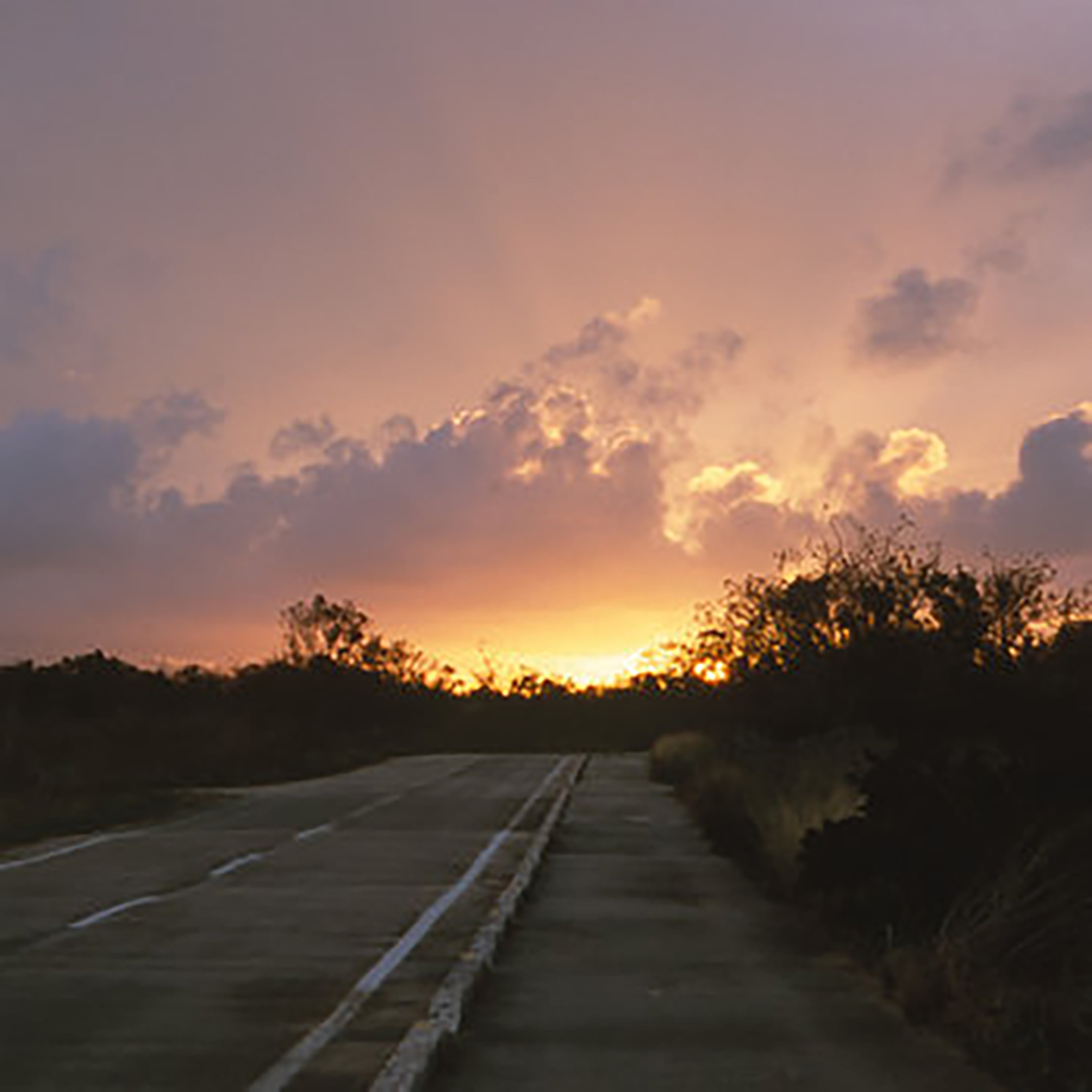 Explaining why one Celer album is significantly better than another is no simple task, as Will Long is generally an extremely consistent artist who has released a huge volume of warmly lovely, loop-based ambient drone albums. Consequently, it is dangerously easy to take his artistry for granted, as a casual listener would not be crazy for finding a lot of Celer's oeuvre relatively interchangeable. From my perspective, however, Celer can be viewed as Long's tireless and Romantic quest to conjure up fragments of melody so achingly sublime that they can be looped into infinity. In that regard, Long has rarely come closer to realizing that dream than he does on Future Predictions. These four lengthy compositions capture Long at the absolute peak of his powers, resulting in the rarest of achievements: a 2+ hour album that leaves me wanting more and regularly inspires me to start it all over again as soon as it ends.
Explaining why one Celer album is significantly better than another is no simple task, as Will Long is generally an extremely consistent artist who has released a huge volume of warmly lovely, loop-based ambient drone albums. Consequently, it is dangerously easy to take his artistry for granted, as a casual listener would not be crazy for finding a lot of Celer's oeuvre relatively interchangeable. From my perspective, however, Celer can be viewed as Long's tireless and Romantic quest to conjure up fragments of melody so achingly sublime that they can be looped into infinity. In that regard, Long has rarely come closer to realizing that dream than he does on Future Predictions. These four lengthy compositions capture Long at the absolute peak of his powers, resulting in the rarest of achievements: a 2+ hour album that leaves me wanting more and regularly inspires me to start it all over again as soon as it ends.
One aspect of Will Long's artistry that I have always appreciated is his ability to evoke the sense that there is a deep undercurrent of emotion, mystery, and meaning lurking within his work, which is a trick that very few other ambient artists are able to pull off.It certainly does not hurt that Long is also a fitfully brilliant minimalist composer, but there is definitely something larger and more compelling than that happening with this project: Long has amassed a vast body of work that feels like a bittersweetly beautiful, impressionistic, and ever-expanding palace of memories.As befits a release as ambitious as a 4-CD boxed set, Future Predictions is an especially poignant and enigmatic example of that unusually intimate and diaristic approach to art, as Long accompanies the music with a small booklet of poetic writings, travel photos, and some enticingly cryptic other images of elusive meaning (a black and white photo of a forest fire at night, a picture from an early 20th century Antarctic expedition, a grainy image of the Dead Sea).The song titles deepen the mystery still further, as they make reference to cities in Sumatra and Lebanon.Presumably, all have some ties to Long's own travels and personal memories, but that is not made explicit nor should it be considered a given: Long is certainly welcome to craft any poetic fictions he wants while straining to express the ineffable.In fact, all of the accompanying texts and images might be a fiction, as Long describes Future Predictions as "a meditation on future events" and a sort of inversion of 2018's backwards-looking Memory Repetitions retrospective.Still, I would be very surprised if Future Predictions was not largely inspired by real past loves and snatches of beautiful memories.This is a Celer album after all.
Notably, there are allegedly some field recordings buried throughout the album, but they are far too well concealed to provide any further illumination (though I would be very impressed if they were field recordings from the future).In fact, just about all of the source sounds have been blurred and processed into floating, billowing unrecognizability on Future Predictions, as Long's layers of loops mostly resemble an orchestral recording that has been dissolved and stretched into abstraction.For what it's worth, my favorite pieces are the two bookends, though the gulf between them and the other pieces is not a large one.Moreover, all four pieces are unified by their similar structure and tone.Long made a conscious decision to avoid any overt "long-term structural development" within these pieces, so all of them begin and end with the same rich tapestry of collaged motifs in place.The result of that approach is that each piece feels like a sustained dream state that lazily churns with deep drones and swooning, sensuously intertwining, soft-focus melodies.Like a lot of Celer albums, these pieces evoke a mass of thick, slow-moving clouds broken by vibrant streaks of light, but the majestic ascending melodies of a piece like "Merita" suggest the beginnings of a brilliant sunrise as well.In fact, only the more simmering and brooding "No Sleep in Medan" lingers in melancholy, as the remaining three pieces transcend wistful meditation to take a brighter, more hopeful tone.In the wrong hands, such a tone would likely lead in a saccharine direction, but Long has the lightness of touch and intuitive grasp of dynamics and contrast needed to make it work.The closing "Qaraoun" is an especially lovely example of that mastery, as its gorgeous ascending melody has a hallucinatory, shimmering texture that feels like it is echoing around a vast cathedral leaving a trail of quivering, ghostly afterimages in its wake.
The only arguable caveat with Future Predictions is that it is essentially just four elegantly crafted and layered loops allowed to unfold in floating stasis for roughly half an hour each.That will likely drive some people mad, as there truly is no noticeable development within each piece.I have a hard time relating to such a grievance though, as I would be just as happy if this album were just one of those four repeating motifs extended for two hours.Long's brilliance as a composer lies in the juxtapositions and in the details, so I see no reason for any further transformation to occur when the initial theme is already gorgeous, immersive, and hypnotically meditative.I only find myself wishing something new would happen when I do not find the central motif fully absorbing on its own, which is why I was so fond of the prominent field recordings on Xièxie: they made good songs more rich, more textured, and more interesting.A piece like "Qaraoun," on the other hand, is simple, perfect, and fully realized right from the start so no further embellishment is needed or desired.In fact, that statement applies to just about everything here.I cannot pretend to have a comprehensive recall of Celer's entire catalog, but I cannot think of any other albums that are this consistently strong from start to finish.As I have said about William Basinski in the past, it might seem deceptively easy or lazy to compose a piece from just a few endlessly repeating notes, but achieving the balance of rhythm, small-scale dynamics, and shifting harmonies necessary to cast a sustained and beautiful spell requires an enormous amount of skill and patience.As with Basinski's best work, Future Predictions makes that process seem effortless and organic, but that is precisely because Long is a master illusionist able to produce a distillation so lovely that no traces of the intricate, meticulously shaped scaffolding remain.
Samples can be found here.
(Note: Future Predictions is currently available in digital format only.The physical release date is March 6, 2020)
Read More
- Administrator
- Albums and Singles
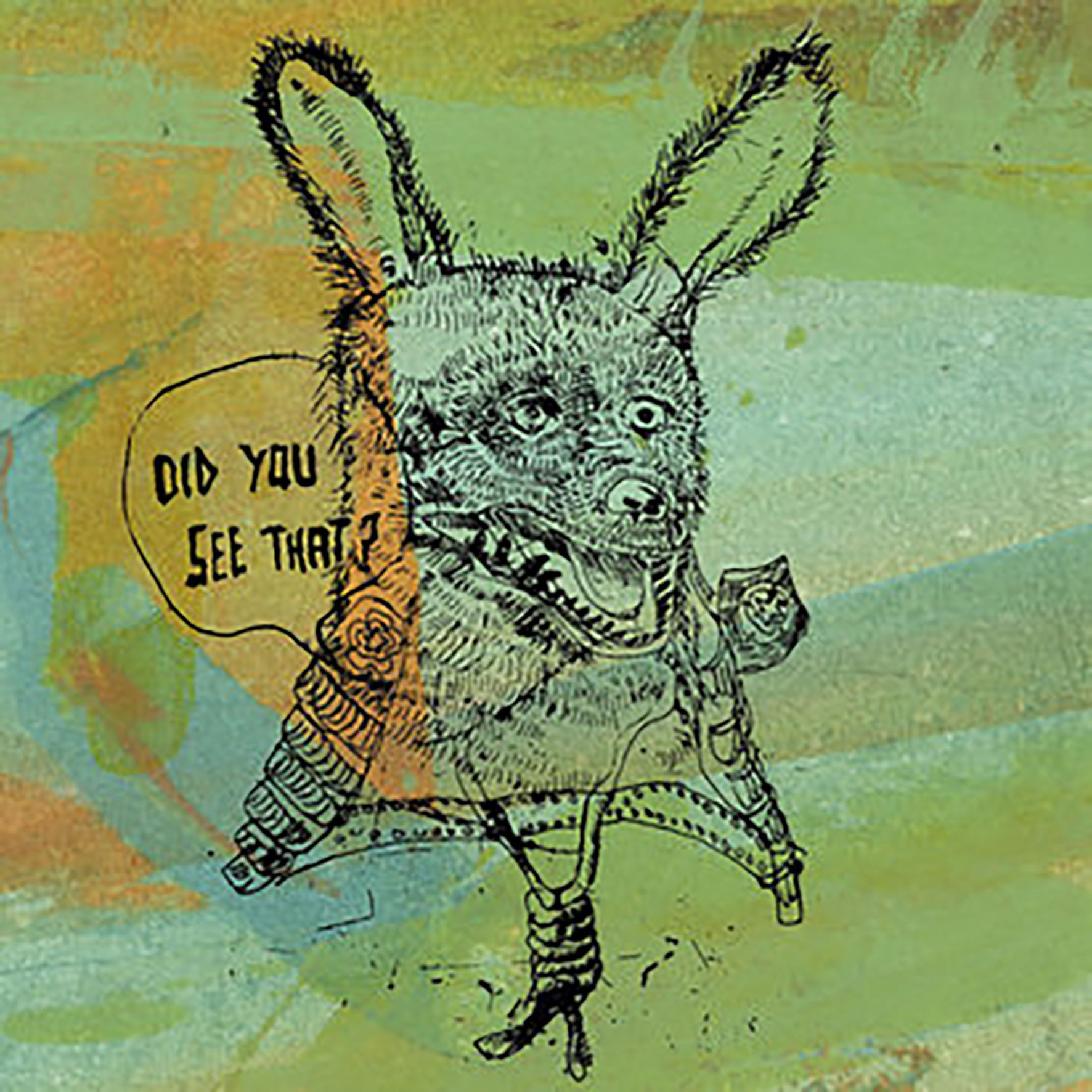
I was starting to get a little worried about Big Blood, as they went almost all of 2019 without releasing any new music. Thankfully, however, they were just quietly amassing material for not one but TWO new albums to be released in rapid succession. The first of the pair is this one, a self-released duo recording that surfaced digitally at the end of December. Obviously, they chose to give the more rocking family affair Do You Want to Have A Skeleton Dream? the more high-profile release, but that does not necessarily mean that that album got all the best songs. In fact, there are a couple of absolutely beautiful pieces on this more modest, stripped-down and fitfully ballad-centered release. Consequently, I have no doubt that there will someday be a deluxe reissue in Deep Maine's future, as it certainly deserves it. Until then, however, "A Message Sent" is an instant classic no matter which format it appears in.
I first came to Big Blood after falling in love with Fire on Fire, as the line separating the two projects was initially quite a blurry one: the ragged, psych-damaged folk aesthetic and principle songwriters were the same (Caleb Mulkerin and Colleen Kinsella), but Fire on Fire featured an expanded ensemble of talented collaborators.Naturally, having Micah Blue Smaldone and some former Cerberus Shoal bandmates along for the ride yielded some great results, yet the primary appeal of both bands has always been the songwriting.While Mulkerin and Kinsella's talents in that regard have certainly not dimmed over the last decade or so, this project has evolved into quite an idiosyncratic, unpredictable, and stylistically fluid endeavor in recent years that can be quite a different animal than either Fire on Fire or early Big Blood.I am certainly happy to follow Kinsella and Mulkerin wherever their mercurial muse leads them, but the diverging paths that their albums have taken is a significant one: some albums are thematically focused conceptual or aesthetic statements and some are just straightforward collections of good songs that harken back to their earlier strain of outsider Americana.Deep Maine is mostly an album that falls in the latter category, albeit one with some occasional detours and eccentricities.The opening "Hail the Happy Hourlings" is an especially strong example of the skewed vision that the duo brings to traditional folk/country fare, as Kinsella's lovely, lilting vocals and the simple, bittersweet piano melody are embellished with a persistently mooing cow and a woozy flute motif.It has all the hooks and melody I would expect from a classic country song, but it feels like that song is bleeding into a considerably weirder dream or hallucination without sacrificing any of its poignancy or soul.
That countrified heartache gives way to more rousing fare with the following "Baby Eyes," as Kinsella and Mulkerin's harmonized vocals lead an amiably rolling and anthemic sing-along.It is a bit too breezy to rank among my favorite Big Blood songs, but it is illustrative of some of the details that make the duo such a delightful and unique creative force.Beyond the pair's obvious talent for crafting strong hooks, "Baby Eyes" strikes a perfect balance of playful experimentation and rough, homespun charm that can only come from years of comfortably recording together.Mulkerin and Kinsella have a real genius for making their music feel wonderfully loose, unpretentious, and effortless: "Baby Eyes" is packed with cool melodic interplay, inventive arrangement flourishes, and endearing eccentricities (the wonderfully warbling backing vocals), yet it has the casual spontaneity of a song that was bashed out in a single take with no overdubs.As much as I appreciate all of those details, however, the songs themselves always remain the essence of Big Blood's greatness (though the duo's unerring instinct for not smothering those songs in overproduction or perfectionism is crucial too).In keeping with that sentiment, my favorite piece on the album is probably the most direct and minimal one of all, as "A Message Sent" is essentially just a vocal melody and a few simple piano chords.While those two elements are all Mulkerin and Kinsella need to conjure up an achingly beautiful reverie, the piece is elevated by some wonderful vocal harmonies as well as some great psychedelic flourishes in the periphery (backwards guitars, orchestral swells).Given the conspicuous absence of any country or folk influence, it almost sounds like a Flaming Lips song, but more like a highly sought-after demo version of a beloved classic than something that would wind up on a polished formal album.
The album's second half, on the other hand, is a considerably more eclectic and abstract affair.The strongest (and most endearingly weird) piece is the Kinsella-sung "The Queen and Her Court II," which features a sing-song melody that recalls a sea shanty or early English folk song.Aside from a subdued, winding organ melody, however, every other aspect of the piece is warped and hallucinatory: the vocals are distorted, the percussion is hollow and echoing, and a current of gurgling and smeared noises roils in the periphery.Elsewhere, the hypnotic repetition and mass vocals of "Serpent Skies" resemble a communal jam that some '70s hippie cult might have recorded.That piece segues nicely into the lovely and meditative closer: a reverent cover of Lloyd Cheechoo's bass-driven "James Bay" that transforms it into something approaching a hymn (Light In the Attic fans will likely recall the original from 2014's Native North America).
To some degree, the small number of songs (seven) and the stylistic variety of Deep Maine give it the feeling of an odds-and-ends collection, but that actually works in its favor, as there is not much here that sounds like business-as-usual for Big Blood (except for perhaps "Time is Coming").Also, Big Blood's orphaned songs, digressions, and covers historically tend to be every bit as likable as their formal albums (sometimes more so).Consequently, Deep Maine is quite an enjoyable batch of songs that both explores some unfamiliar stylistic threads and sneaks in a few fresh classics in the process.
Samples can be found here.
Read More
- Administrator
- Albums and Singles
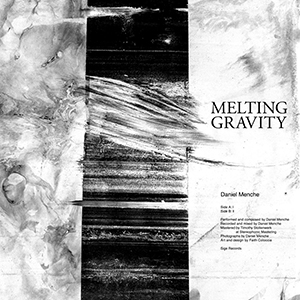 Compared to his last release on the SIGE label, the three CD Sleeper, Melting Gravity is a much tighter affair: a single LP with two side-long pieces. Unsurprisingly then, Menche stays more stylistically focused, and surprisingly creates some of the most musical sounding work yet. Most definitely not a full on noise work, but also more varied and dynamic than his more ambient works, it is yet another unique work from one of the most unique artists currently active.
Compared to his last release on the SIGE label, the three CD Sleeper, Melting Gravity is a much tighter affair: a single LP with two side-long pieces. Unsurprisingly then, Menche stays more stylistically focused, and surprisingly creates some of the most musical sounding work yet. Most definitely not a full on noise work, but also more varied and dynamic than his more ambient works, it is yet another unique work from one of the most unique artists currently active.
For the most part, Daniel Menche avoids standard noise and distortion altogether for this record.Sure, there are moments in which passages build a bit in intensity, but never to overwhelm, and overall there is much more in the way of tone and timbre here as opposed to just texture.The first side opens with a repeating, almost dubby bass pattern that continues throughout, with chiming bells and electronic pulses layered upon one another slowly, but deliberately.Never does the piece become too overpowering or bogged down, but Daniel is definitely juggling a lot of different sounds at once.
There is a meditative, monastic quality to the sound, like something that could be heard at a Buddhist temple during prayer.However, there’s an odd edge to things.He worked heavily with FM synthesis on this record, so many of the bell or instrument sounds that appear have a deliberately unnatural quality to them.That distinctive metallic clang appears consistently on this record.Because of that, what sounds like ancient, sacred music has an alien, almost digital simulation quality to it.
Eventually, Daniel Menche pulls back some of the layers, allowing the sun to shine through clearly as the bass line rumbles away.Flare-ups of what sounds like over-driven distortion do appear at times, but with a pleasant shimmer to them, making for something pleasant as opposed to abrasive.When the mix is at its most sparse, there is a beautiful ambient quality to the work and, even as things take a turn darker near the side’s conclusion, the more lush elements never go away.
The other side features mostly the same sounds used by Menche, with heavy emphasis on the rhythmic bass passages and metallic, chiming bits.Comparatively though he keeps the sound more spacious.Layers appear and retreat, and it remains a dynamic piece from beginning to end, but there is a bit less movement overall when compared to the first half.Expanding, processed sounds from stringed instruments make a tonal, drone-heavy sounding work here, with lots of room for the elongated tones to take the focus.
One of the aspects of Melting Gravity that grabbed me was the way that, in its own oblique way, it sounds a lot like the early days of Robert Hampson’s Main.The way that, propelled by a dubby bass loop, Menche integrates conventional instrument sounds with unconventional processing was very reminiscent of works such as Motion Pool.Both have the same juxtaposition of organic and unnatural, resulting in music that is as familiar as it is alien.Daniel Menche has been a favorite artist of mine for a while now, but I think this may now sit at the top of the metaphorical pile.
Read More
- Administrator
- Albums and Singles

A Typical Night in the Pit is a collection of new music by Los Angeles' Nick Malkin. It is an album that finds the artist absorbed in the density and chaos of the urban complex. It is unquestionably an "LA album," but not the LA of hi-fi listening bars and twinkling, Instagram-ready New Age. Rather, Malkin navigates something more akin to the LA found in the films of Robert Altman or Alan Rudolph— overheated, tense, hazy, frayed— with blue-lit, nocturnal compositions that at times recall Mark Isham's noirish scores for those subversive (anti-)Hollywood pictures. Enlisting a revolving cast of LA experimentalists, Malkin has assembled a record that is as chameleonic as it is cohesive, offering up vignettes ranging from the skewed MIDI-jazz of "Sixth Street Conversation" to the skulking menace of "Estacionamiento Privado," before giving way to the wide-eyed, cloudy closer "View From Two Perspectives."
C’mon, let’s go in here and get outta this heat.
More information can be found here.
Read More
- Administrator
- Albums and Singles
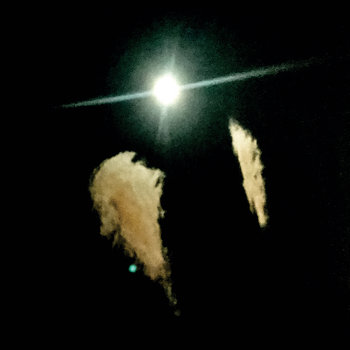
As Midwife, Denver based multi-instrumentalist Madeline Johnston plays what she describes as "Heaven Metal," or emotive music about devastation. Johnston began developing the experimental pop project in 2015 while a resident of beloved Denver DIY space Rhinoceropolis. The venue/co-op started in the early aughts and nurtured local artists until 2016, when its doors were shuttered due to high tensions surrounding the safety of DIY spaces (not coincidentally following the horrific Ghost Ship fire in Oakland). Residents were displaced around Denver and artists like Midwife were forced to start over.
However, it was at Rhinoceropolis that Madeline became close with Colin Ward, an artistic confidant and friend to whom her new album, Forever, is dedicated. Madeline comments, "He was my roommate and was the embodiment of that place [Rhinoceropolis] in a lot of ways. We became really close friends there. I was always learning so much from him, about life and being an artist. He was an amazing teacher and friend to me." When Ward passed away unexpectedly in 2018, she turned towards sound to express the indescribable feelings that partnered with her grief.
These mournful sounds ultimately developed into her new album, Forever. The 6-song LP is a latticework of soft-focus guitars and precise melodies– anthems of light piercing through gray clouds of drone. On the track "C.R.F.W.," we hear Colin Ward reading a poem that speaks of a leaf falling from a tree in autumn: "imagine the way a breeze feels against your leaf body while you finally don't have to hold on anymore." Johnston responds with slowly radiating tones, branches stretching out to hold the leaf one last time. "I wanted to write him a letter. I wanted to make something for him in his memory," Madeline says of Forever.
On Forever, Midwife combines ambient and dream pop into nuanced, reverb-soaked music that is equally haunting and moving.
More information can be found here.
Read More
- Administrator
- Albums and Singles

Matt Jencik is back on Hands in the Dark with his new album, Dream Character, the follow up to his first solo record Weird Times back in 2017.
Whilst all the songs on his debut album were created using the same sampling method on the same instrument, this time the Chicago artist's approach is slightly different. Using a combination of 4-track cassette, digital recording & sampling, he added live improvisations and a wider selection of instruments including guitar, bass, organ and string synth to his work.
What Matt Jencik achieves on Dream Character this time is, like a powerful dose of psychedelic drugs, not to be taken lightly. There are layers, and if you're prepared to dig you will find yourself drawn into a maze of pathways that can take you in multiple directions, via feelings of escape and release alongside suffocating claustrophobia, or soaring, triumphant beauty paired with cold, lonely despair. These eight titles can both tuck you in and make you feel like you’ve got to fight your way out. Either way there is great value in the experience. There is a purity and a clarity to Jencik's sound, but one that can only truly be accessed by listening with your own intention.
More information can be found here.
Read More

